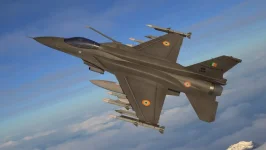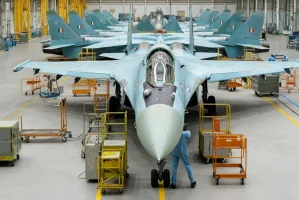- Views: 3K
- Replies: 39
Global aerospace and defence giant Lockheed Martin is promoting its F-21 fighter jet as a strategic pathway for India to eventually acquire the premier F-35 Lightning II stealth fighter.
The proposal was detailed by CEO Jim Taiclet, who also revealed plans for a significantly upgraded F-35 variant that would offer capabilities approaching the next generation of fighter jets at a fraction of the cost.
Speaking at the Bernstein 41st Annual Strategic Decisions Conference on May 28, Taiclet outlined a two-pronged approach to deepen the company's strategic ties with India. He positioned the F-21, an advanced aircraft derived from the F-16, as a crucial "stepping stone" for the Indian Air Force (IAF).
"There are some countries that could see F-21 or F-16, for India, for example, as a stepping stone to F-35," Taiclet stated. This strategy acknowledges the complexities surrounding the direct sale of the F-35, which is subject to stringent U.S. export controls under the Arms Export Control Act, requiring high-level approvals from multiple government bodies.
The F-21 is being offered specifically to meet India's defence needs and would be produced locally in partnership with Tata Advanced Systems as part of the 'Make in India' initiative. This custom-configured aircraft features advanced avionics, an Active Electronically Scanned Array (AESA) radar, and enhanced weapons capacity, making it a formidable 4.5-generation fighter.
While an F-35 sale has been verbally offered to India by U.S. officials, Taiclet's comments suggest a phased approach. By first adopting the F-21, India could build the necessary industrial and operational foundation for a smoother transition to the more technologically sophisticated F-35 platform in the future.
Alongside the India-specific proposal, Lockheed Martin announced a "fifth-generation plus" initiative for the F-35. This ambitious upgrade plan aims to integrate cutting-edge technologies that the company developed for the U.S. Air Force's Next-Generation Air Dominance (NGAD) program, a contract Lockheed ultimately lost to Boeing.
The upgrades include advanced radar and infrared-absorbing stealth coatings, structural modifications to improve its low-observable profile, and superior electronic warfare and networking systems. Taiclet claimed this enhanced F-35 could deliver 80% of the capabilities of a brand-new sixth-generation fighter, like the recently announced Boeing F-47, at approximately half the cost.
A key highlight of the proposed upgrade is the potential for the F-35 to become "optionally manned." Taiclet noted, "We could make the F-35 pilot-optional over a relatively modest timeframe," leveraging autonomy software developed for the NGAD bid.
This would align the aircraft with the future of air combat, which increasingly involves unmanned systems and manned-unmanned teaming. The company estimates some of these upgrades could be ready for integration within two to three years, pending funding.
This dual strategy comes as Lockheed Martin navigates a competitive global market. The phased offering to India is seen as a move to counter the influence of Russian and Chinese fighter jets in the region, while the F-35 upgrade plan is designed to maintain the aircraft's technological dominance for decades to come.



